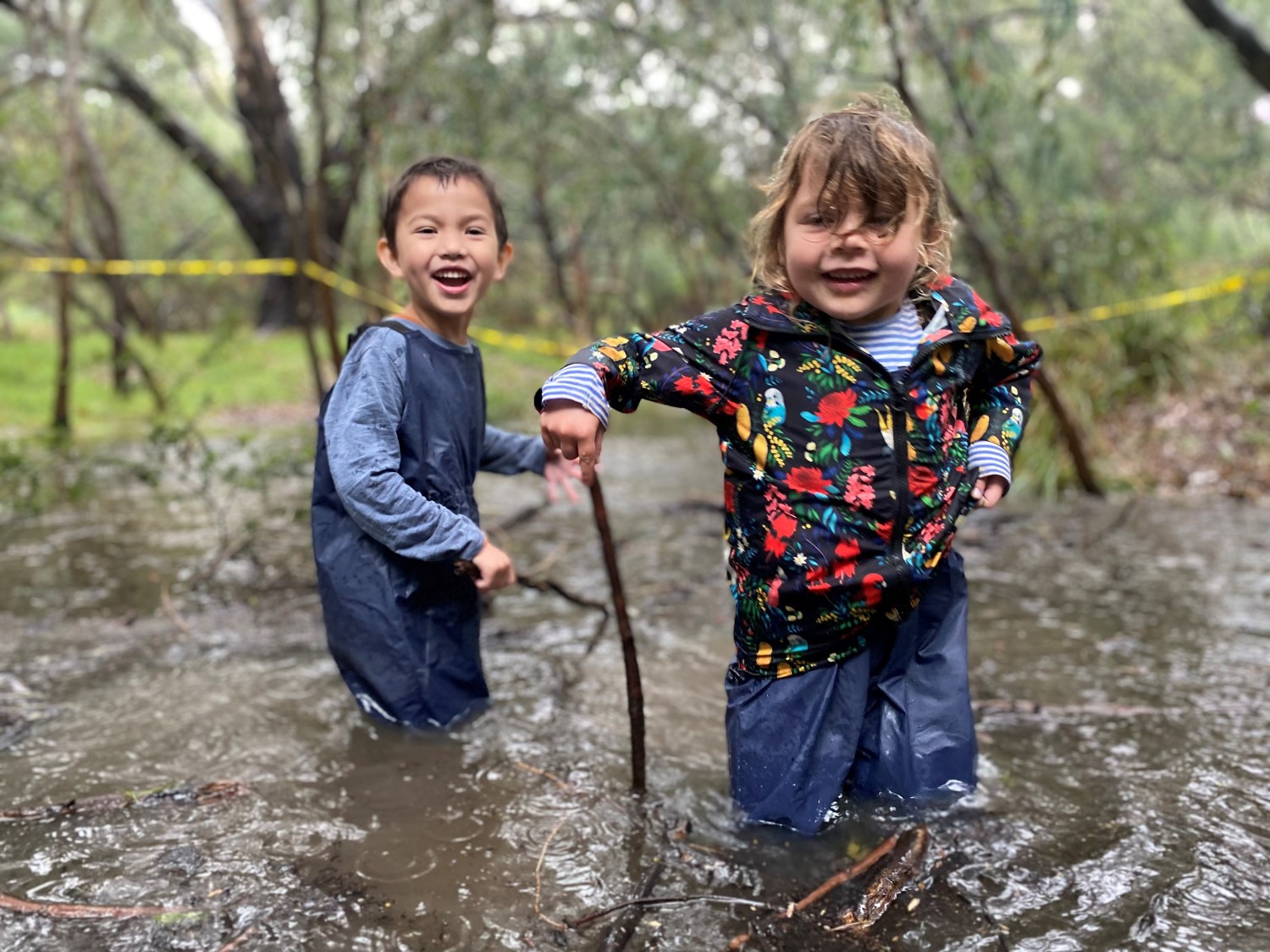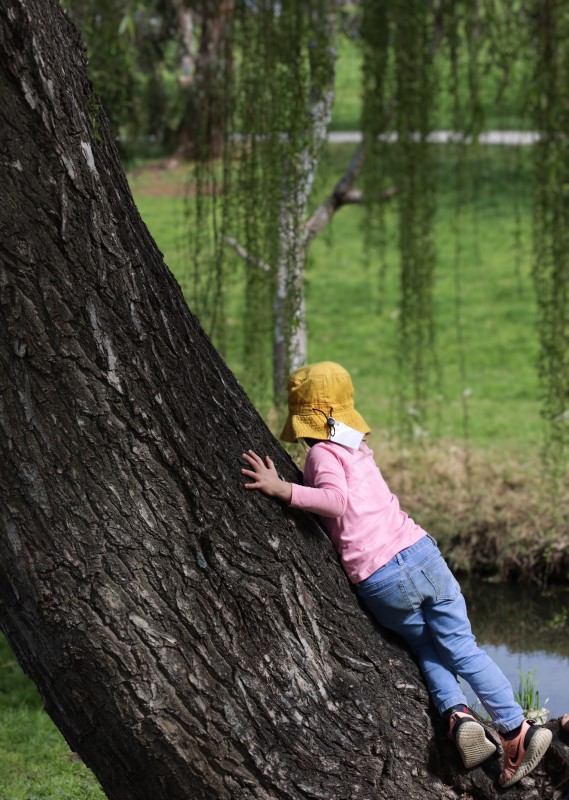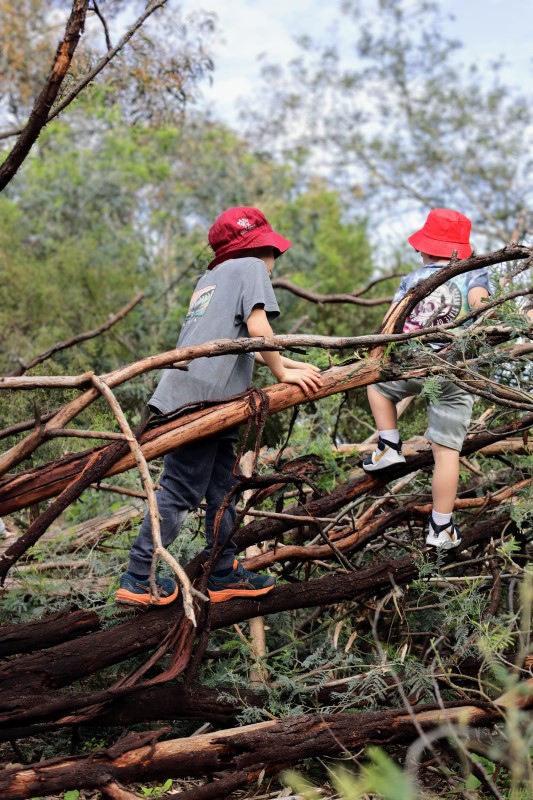The element of risk is a crucial part of play for children in the early years, allowing them to explore and challenge their own limits and capabilities.
At Gowrie Victoria, children regularly engage in risky play to help build resilience and persistence, and to foster greater confidence, creative thinking, and curiosity.
From climbing trees and wading through creeks, to playing hide-and-seek in bushland and cooking damper on a fire, children are given space to take risks and develop important life-skills.
Creek adventures
Clare Court has a unique Out and About program that allows children to spend long periods of time exploring the adjoining Cruickshank Park and Stony Creek, as well as nearby Williamstown Beach, through the lens of respectful First Nations perspectives.
Climbing trees, jumping off logs, balancing on rocks across the creek, hiding in bushes and building cubbies are all embraced as ways of engaging with risk, connecting with natural spaces, and interacting with each other.
Early Years Leader Tam Tran says climbing, building, reaching, jumping and sliding are all elements of physical risk taking.
But, she says, on a deeper level risky play is about “open possibilities, uncertainties and the unknown”.
“We are all part of a world, human and more than human, and we engage in risky play in this sense of co-existing and researching in response to the world around us,” Tam says.
A key element of risky play at Clare Court involves the use of technology, with children given access to GoPro cameras during their Out & About adventures.
“Children have been crossing over rocks, moving alongside the flow of water, up and over muddy banks, holding GoPro in ways that invite multiple perspectives (such as underwater),” Tam says. “I believe this captures our risky play in ways that are inclusive of all learners and learning styles. And the benefits of how we view, value and embed risky play lies within this. Children are empowered in who they are individually.”

Bush Play
At Broadmeadows Valley, an extensive On Country Kinder program at nearby parklands, surrounded by shrubs, trees and water, offers children the opportunity to engage in open-ended risky play.
Educational Leader Hannah Fruin says children need space to try new things. “It sits within the belief that children are capable and independent beings,” Hannah says. “Children don’t want to get hurt; if they’re climbing, they intrinsically want to keep themselves safe. It’s about telling them there’s a risk and giving them the tools to manage that risk.”
Each service conducts thorough risk assessments when planning Out & About or On Country Kinder excursions, outdoor play, and time around the fire pit, but Hannah says it comes down to what is risky and what is dangerous.
The possibility of confronting snakes in the bush during summer is countered with an annual visit from The Snake Hunter, who conducts training sessions with staff and children. “We don’t want the children to be scared or worried, just aware of what they need to do,” Hannah says. “It’s the same when children are walking along a plank of wood. If we say, ‘be careful’, what does that really mean? But if we shift that and explain why they need to be careful and how they can manage that risk, then we empower children to make judgements and discover their own limits and capabilities.”


